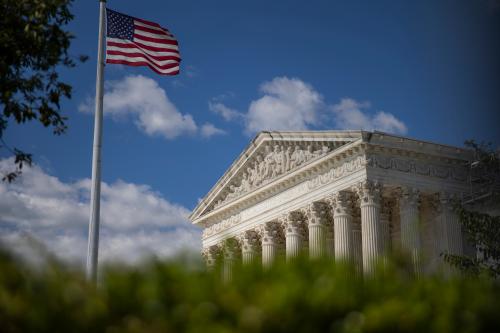Two topics have dominated economic discussion in recent months—income inequality and tax fairness. The Piketty-Saez chart demonstrating the dramatic rise in the income share of top earners since 1980 is this decade’s Laffer Curve, and the super-rich who pay taxes at lower rates than their secretaries are liberals’ riposte to the Reagan-era welfare queens.
It’s natural to assume that these two tropes are connected: Surely changes in the tax code since Ronald Reagan took office have contributed substantially to post-tax income gaps between the top and the rest of us. After all, top rates have been slashed, and lobbyists have been busily working to carve out special deals for taxpayers who can afford their services. If we still had the pre-Reagan tax code, surely the rise in inequality would have been much smaller.
Most commentators have accepted this narrative, though some, including TNR’s own Tim Noah, have questioned it. And a recent high-quality study suggests that it’s the skeptics who are right: Rising inequality, it turns out, does not have much to do with tax policy.
Last December, the Federal Reserve published a working paper by four researchers—one university-based, one from Treasury, two from the Fed—based on a large, confidential file of tax returns: a one-in-5000 random sample of the population of U.S. taxpayers, comprising 30,000 households. They found that the rise in income inequality mostly reflects permanent as opposed to transitory changes in household income.
But the federal tax system didn’t contribute to that rise. From the beginning of the period studied to the end, our moderately progressive tax system reduced pre-tax inequality by roughly the same amount. Overall, the authors conclude, the tax system “does not seem to have altered the trend toward rising inequality.”
The authors are aware that their conclusion is counterintuitive: “The finding of little change in the effect of the federal tax system on the evolution of inequality in recent years might appear surprising in light of the well-publicized reductions in marginal tax rates, especially at the high end of the income distribution, in 2001 and 2003.” Here’s how they explain their finding: “Changes in top marginal rates were accompanied by (smaller) reductions in marginal rates for other income groups as well as by significant expansions of the earned income tax credit and the child tax credit.” The net effect of all this, they conclude, was “small.”
I don’t expect readers to take my word for it. So go to federalreserve.gov/pubs to find the paper by Jason DeBacker, Bradley Heim, Vasia Panousi, and Ivan Vidangos, called “Rising Inequality: Transitory or Permanent? New Evidence from a Panel of U. S. Tax Returns 1987-2006.” You can judge for yourselves. (My economist colleagues at Brookings, who discussed this paper in their seminar series, consider it to represent high-quality research.)
If this finding is valid, the economic framework that has recently defined our politics should be replaced by a new narrative, one that runs as follows: In recent decades, changes in the structure of our economy and politics have created a dramatic increase in income inequality; while changes in our tax code did not contribute materially to this increase, they did nothing to mitigate it; if we want to use taxation to reduce this alarming gap between the top and the rest of us, we’ll have to broaden the debate far beyond its current bounds.
This is precisely the conclusion that the Nobel prize-winning economist Peter Diamond has reached. In a recent New York Times interview, he put it this way: “The debate in Washington is between the Bush-era and Clinton-era tax rates. [It] should be between the pre-1986 Reagan [top] tax rate, which was 50 percent, and the rates that existed from Johnson until Reagan,” which were higher.
This may strike some readers as the basis of a renewed fighting creed for liberals. It may strike others as demonstrating the need to moderate our hopes for tax reform as a way of reducing inequality and look in other directions for policies that can improve the well-being of middle and working-class households. (You may not be surprised to learn that I incline toward the latter view.)
Still, the impending expiration of the Bush tax cuts and of the alternative minimum tax creates an opening for a broader reexamination of our tax code than we’ve had since 1986. And there are two basic strategies on offer. One is to go back beyond 1986 to a world of high top marginal rates; the other is to use 1986 as a template. However difficult the latter strategy may be, it’s a lot more politically feasible than the former. And we could do it in a way that is at once simpler, more progressive, and more pro-growth than is the current code. It seems we’ll have to accept that such changes won’t do much to reduce persistent income inequality. But it would accomplish a substantial amount in its own right, and it may allow us to concentrate our energies on the true causes of that vexing problem.



Commentary
Op-edStop Blaming the Tax Code For America’s Inequality Problem
April 19, 2012